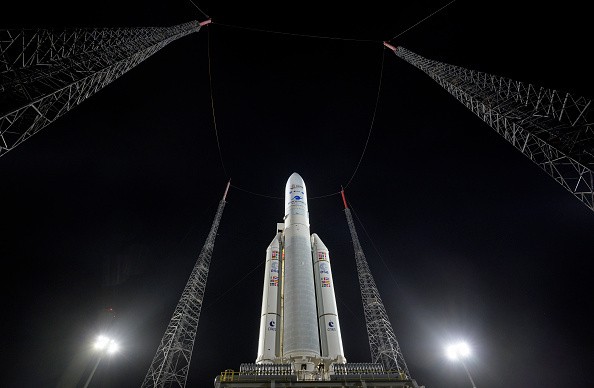Predictions given by Joseph Remis on Satflare and Twitter indicates that the Russian rocket will re-enter the Earth's atmosphere around 12:44 p.m. ET on the 5th of January.
The projected impact time might be 7 hours off since the rocket is uncontrolled and can move about unpredictably as it goes into the atmosphere.

Launching of Russian Angara A5 Rocket
The Plesetsk Cosmodrome saw the launch of the Russian Angara A5 rocket on December 27, according to Weather Boy. The Angara rocket was named after a river in Siberia and is Russia's first heavy-lift launch vehicle in decades.
December 27 was the third test flight of the massive rocket. The launch went off without a hitch, but an upper-stage rocket failed to ignite.
The Persei rocket, which was supposed to be the third stage of the Angara, failed to launch after the first two stages did. In contrast to the first fire, which helped place the fake payload in low Earth orbit, the second fire, which also failed, failed to place the dummy payload in a geostationary transfer orbit. As a result, the 20-ton mass is hurtling toward the planet's surface.
Before and not too long after the successful launch of the Angara spacecraft, Roscosmos released images and a congratulatory message.
However, Roscosmos has declined to comment on the failure of the Persei rocket and has instead deferred to the Russian military, which was in charge of the launch. At the time of this writing, the Russian military has not commented on this missile.
Areas the Rocket May Impact
As a result of the out-of-control rocket, commercial and private companies, like SATFLARE, N2YO.com, are releasing maps and data about it on their respective websites to the public. In the early afternoon of Wednesday (East Coast time), SATFLARE.com's Joseph Remis predicts an impact over Australia.
As a result of the rocket's incredible speed, it may come in quicker or slower than expected and hit Earth somewhere else on one of its probable orbital planes. To get a sense of where the rocket may land on Earth, there are four orbital paths that pass the country about that time.
The first goes from the San Francisco Bay region to the northwest corner of Nevada north and east to southwest Oregon and western Montana.
The second stretches from southern California around Los Angeles to central and southern Idaho and Montana via the center of Nevada. Once through the heart of Texas, it'll enter Oklahoma and Missouri before crossing into Illinois and Wisconsin along the Iowa/Illinois border.
The fourth route covers southeastern Florida, the Outer Banks of North Carolina, southern New England, and eastern Maine. A shooting star or bolide might be seen in the sky even if the rocket doesn't hit these places.

Will the Impact be Life-Threatening?
The estimated weight of the rocket and dummy payload is around 20 tonnes. Only a portion of the rocket's cargo has reach the Earth's surface.
According to Johnathan McDowell, an astronomer at the Center for Astrophysics, some fragments may reach the Earth's surface with a dry mass of 4 tonnes.
A rogue rocket has endangered the United States before, so this is nothing new. The main stage of the Long March 5 festival came crashing down in May. Some of the rocket stages survived re-entry and came down on Earth, but most of it was destroyed on re-entry.
The oceans are more likely to be hit by an errant rocket than populated land regions because of the Earth's water-to-land ratio. Even while the chances are in favor of the out-of-control Russian rocket impacting an uninhabited location, it is still too early to tell for sure.
Related Article : Russian Authorities Launch Investigation Following Progress Cargo Spacecraft Crash, Debris Inspected
For more news, updates about Russian rockets and similar topics don't forget to follow Nature World News!
© 2026 NatureWorldNews.com All rights reserved. Do not reproduce without permission.





